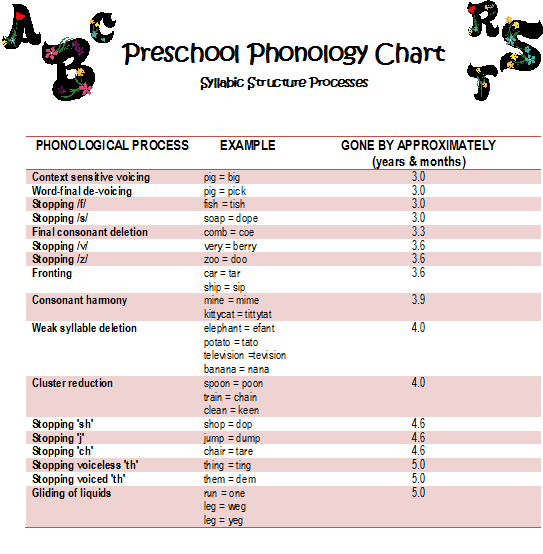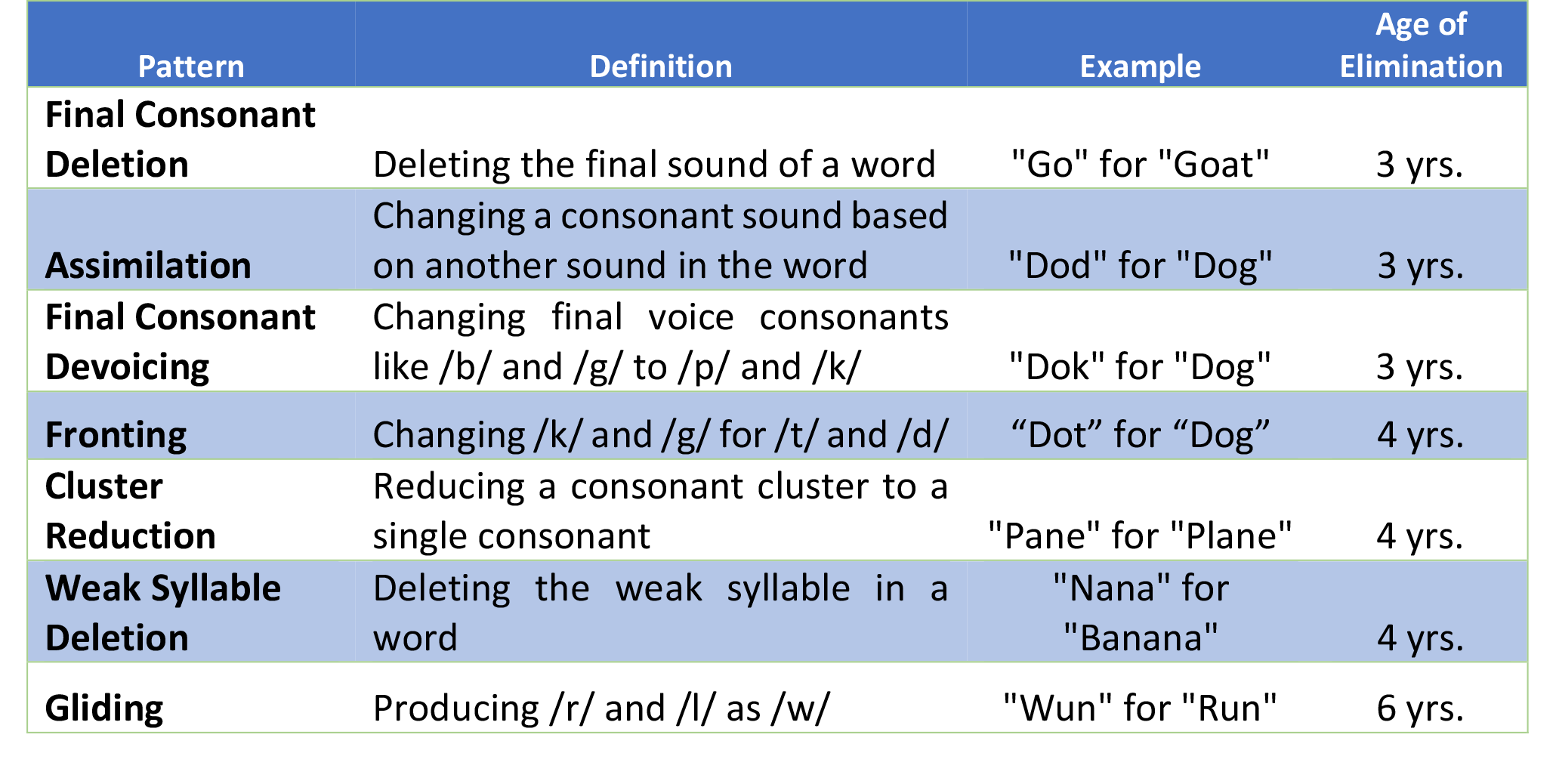

Stridency (f, v, s, z, sh) Palatals (y, sh, ch, j) target y first. If a strident is replaced by a plosive (stop sound), it will present the same as Stopping. Phonological process Description Example Approximate age of elimination Cluster reduction When a consonant cluster is produced with only one Successfully producing speech sounds involves an intricate coordination between a person's oral structures and muscles. Cluster reduction in speech is when a consonant cluster, that is two or three consonants occurring in sequence in a word (like "nd" in friend). However, developmental speech-sound norms differ in age and gender for each speech sound and cluster. The meaning of STRIDENT is characterized by harsh, insistent, and discordant sound also : commanding attention by a loud or obtrusive quality. When to Use the Cycles Approach The cycles approach to speech therapy is intended for children who meet the following criteria: Highly unintelligible (very difficult to understand) Frequently leave out or omit speech sounds Replace some sounds with other sounds Don't use very many different consonant sounds If you're not sure whether the cycles approach is. ): quality timber timbre tone ((music) the distinctive property of a complex sound (a voice or noise or musical sound)) Derivation: strident (conspicuously and offensively loud given to vehement outcry) Meaning: Of speech sounds produced by forcing air through a constricted passage (as 'f', 's', 'z', or 'th' in both 'thin' and 'then') Initial consonant deletion is the. A child with a phonological disorder has a language difficulty which causes problems with learning and organizing their speech sounds into a system of 'sound patterns' or 'sound contrasts'.The problem is at a linguistic level and there is no impairment to the child's speech producing mechanism.In other words, a developmental phonological process disorder involves patterns of sound errors.

In terms of production, they say strident phonemes are due to noise at the place of articulation. Synonyms: blatant clamant clamorous strident vociferous. Phonological Process - STRIDENCY DELETION: Assessment & Intervention Remediation of a phonological processing speech sound disorder requires the reorganization of the phonological system in order to establish new sound patterns necessary for intelligible speech production. A syllabic consonant or vocalic consonant is a consonant that forms a syllable on its own, like the m, n and l in the English words rhythm, button and bottle, or is the nucleus of a syllable, like the r sound in the American pronunciation of work. f, v, sh, ch, j, s, z ) for a non strident sound.

STRIDENCY (noun) The noun STRIDENCY has 1 sense.Check out my quick and easy-to-follow Phonological Process Guide for clinicians and students! Stridency Deletion (StD) is a phonological process seen in typical development up to the age of 3 1/2 - 4 years. Selected Phonological Processes (Patterns)*. Phonological processes, although speech-sound based, are considered to be a symptom of language impairment (rather than articulation). "cup" becomes "tup") Stopping- is the substitution of a sound which momentarily stops the airflow, for those. Then, what is the syllabic consonant? Stridency deletion is to replace a strident sound with a non. The term "strident" was first introduced by Jakobson, Fant, & Halle (1963). This is not everything but it gives you the basic picture. Assimilation (Consonant Harmony) One sound becomes the same or similar to another sound in the word. What is the difference between stridency deletion and stopping? While stopping is a common speech error, its effects tend to drastically reduce a child's speech intelligibility. In terms of acoustics, they say there is a higher periodicity and uniformity in mellow fricatives (e.g. This is because phonological delays and disorders involve patterns throughout speech (at the word level) which impact the sound system as a whole, rather than pronunciation of specific sounds, and thus have an. Now an entire political party is shouting the Big Lie of. Sounds and visuals will keep students engaged. Interdental lisping is when the tongue protrudes between the front teeth when producing /s/ or /z/, resulting in a "th" sound.


 0 kommentar(er)
0 kommentar(er)
